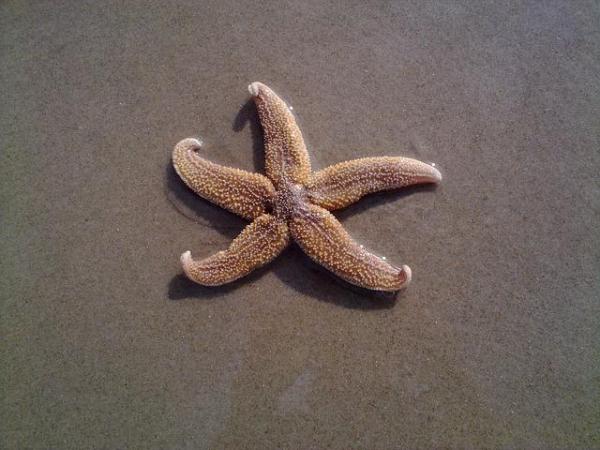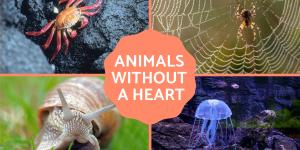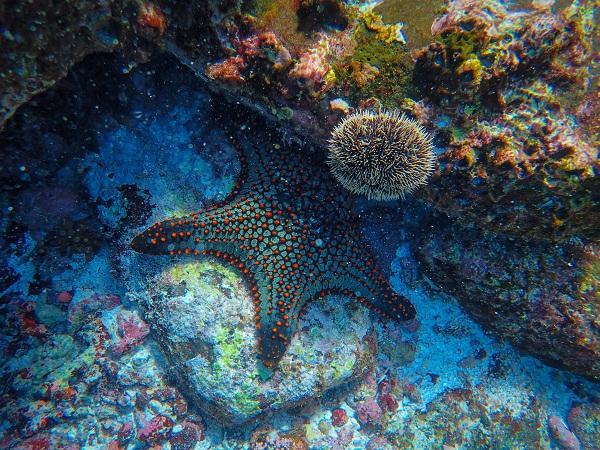What Are Echinoderms?


Echinoderms are a diverse group of marine animals belonging to the phylum Echinodermata. They are characterized by their radial symmetry, that is, their bodies are arranged in a symmetrical pattern about a central axis. Echinoderms are found in all oceans of the world, from shallow coastal waters to the deepest parts of the ocean. They play an important role in marine ecosystems, as they are both predators and prey.
IN the following AnimalWised article, we will explain what echinoderms are, their different types and most important characteristics.
What are echinoderms?
Echinoderms are a diverse group of invertebrate marine animals that include starfish, sea urchins, sand dollars, sea cucumbers, and crinoids. The phylum contains about 7,000 living species, making it the second-largest grouping of deuterostomes, after the chordates. They are characterized by a spiny, calcareous endoskeleton that supports their body shape and provides protection from predators.
Echinoderms occur in all marine environments, from shallow intertidal zones to the deep sea, and play an important role in marine ecosystems. They are important predators, prey, and scavengers and help maintain healthy ecosystems by regulating the distribution and abundance of other marine organisms.

Types of echinoderms
Echinoderms are a diverse group of marine animals that includes several 5 types of organisms, including:
- Asteroidea: sea stars (also known as starfish)
- Ophiuroidea: brittle stars
- Echinoidea: sea urchins
- Holothuroidea: sea cucumbers
- Crinoidea: crinoids
Each of these groups of echinoderms has certain physical characteristics and behaviors that distinguish them from one another. Let us take a closer look at some of them.
Sea stars
Sea stars have five or more arms that radiate from a central disk. They move using hundreds of tube feet and can regenerate lost arms. Sea stars have an excellent sense of smell and can detect prey from a distance using sensory cells on their arms. They are also known for their ability to regenerate lost arms, which is an important adaptation for survival in their often harsh and competitive marine environments.
Brittle stars
Brittle stars have a central disk and long, slender arms that are easily broken off as a defense mechanism. They have a well-developed aquatic vascular system that helps them control their tube feet and move along the seafloor. Brittle stars are omnivorous and feed on a variety of small animals and plant material.
Sea urchins
Sea urchins are spherical or flattened and covered with spines for protection and locomotion. They have a hard, calcareous shell called a test, which contains five double rows of tube feet that they use to move along the sea floor. Sea urchins are herbivores and have a special structure called the Aristotle's lantern, which they use to scrape algae and other plant material off rocks and other surfaces.
Sea cucumbers
Sea cucumbers are elongate and cylindrical, with a soft, leathery skin and tiny tube feet. They have a well-developed aquatic vascular system that helps them control their tube feet and move along the seafloor. Sea cucumbers feed on a variety of organic material, including plankton, algae and small animals. They are also known for their ability to contract their muscles and expel their internal organs as a defense mechanism.
Crinoids
Crinoids have a long stalk with a feathery crown of arms at the top. They use their arms to catch food and can move around with their stalks. Crinoids have a unique feeding behavior in which they capture small food particles using the mucus on their arms and then use tube feet to move the food into their mouths. They are also known for their beauty and are sometimes kept in home aquariums as exotic pets.
Characteristics of echinoderms
As mentioned earlier, echinoderms are divided into five groups, each with its own characteristics. However, there are certain characteristics that are common to all groups. Some of the most important characteristics of echinoderms are:
- Radial symmetry: echinoderms have radial symmetry, meaning their bodies are arranged in a circular or pentaradial pattern around a central axis. This symmetry allows echinoderms to move in all directions and interact with their environment.
- Aquatic Vascular System: echinoderms have an aquatic vascular system, a network of fluid-filled ducts and tubes used for locomotion, feeding, and respiration. The system is powered by a muscular sac, the madreporite, which pumps water into the channels.
- Spiny skin: Most echinoderms have a spiny or bumpy surface that protects them from predators and helps them adapt to their environment.
- Regeneration: echinoderms have the ability to regenerate lost body parts, which is especially useful for species that need to defend themselves against predators. Some echinoderms can even regenerate their entire body from a single arm.
- Tube Feet: Echinoderms have tube feet, small, flexible appendages that protrude from the body and are used for locomotion, feeding, and respiration.
- No brain or central nervous system: echinoderms do not have a central brain or nervous system. Instead, they have a decentralized nervous system, with nerve cells distributed throughout the body.
- Slow moving: echinoderms are generally slow animals, although some species can move quite quickly with their tube feet.
You may be interested in this other article about animals that have no brains.

How do echinoderms reproduce?
Echinoderms have a variety of reproductive strategies, including sexual and asexual reproduction. Let us take a closer look at each of these strategies:
- Sexual reproduction: most echinoderms reproduce sexually, with separate male and female individuals. Males release sperm into the water, which is then ingested by females through their tube feet or special structures called gonopores. Fertilization occurs in the female's body, and the fertilized eggs develop into larvae that eventually settle and metamorphose into adult echinoderms.
- Asexual reproduction: some echinoderms can also reproduce asexually by fragmentation, where a piece of the animal's body breaks off and develops into a new individual. This is common in species such as starfish and brittle stars, which have the ability to regenerate lost limbs.
In addition to sexual and asexual reproduction, some echinoderms may also exhibit other unique reproductive behaviors. For example, some sea stars can reproduce by splitting in half, with each half regenerating the missing parts and becoming a new individual. Some sea cucumber species can also reproduce by budding, where a new individual grows from a small outgrowth on the parent's body.
You may be interested in this other article on asexual reproduction in animals.
How do echinoderms get their food?
Echinoderms have a variety of feeding strategies depending on their specific morphology and lifestyle.
Some echinoderms are filter feeders, meaning they passively collect small food particles from the surrounding water. Feather stars and basket stars, for example, filter small plankton and other organisms from the water with their branching arms. Brittle stars, on the other hand, extend their arms and use them to sweep food particles into their mouths.
Other echinoderms are scavengers or predators that actively search for their food. Sea urchins, for example, use their spines and tube feet to move along the seafloor and scrape algae or other plant material from rocks. Some starfish are also predators, using their arms to break open shells or catch and eat other small animals.
Finally, some echinoderms, like sea cucumbers, are detritivores, meaning they consume decaying plant and animal material that has settled on the seafloor. Sea cucumbers use their tube feet to pick up pieces of the organic material and then carry it into their mouths.
You may be interested in this other article, where we go into more detail about what starfish eat.
How echinoderms defend themselves?
Echinoderms have several mechanisms to protect themselves from predators, parasites, and other threats. These defense mechanisms vary by echinoderm species.
Sea urchins, for example, have long spines that are usually sharp and can injure predators if they try to attack them.
Starfish, on the other hand, have the ability to throw off their arms in defense. This can confuse predators and give the echinoderms a chance to escape.
Sea cucumbers have toxic chemicals in their skin that can cause irritation, nausea, or even paralysis.
Finally, brittle stars change color and texture to match their environment. This makes it harder for predators to spot them.
Even though different types of echinoderm have different defense mechanisms, they all have one thing in common: their remarkable ability to regenerate lost body parts. This means that even if a predator manages to attack and damage an echinoderm, it may be able to regrow the lost body part and recover.

If you want to read similar articles to What Are Echinoderms?, we recommend you visit our Facts about the animal kingdom category.
- Aquae Foundation. «Echinoderms, inhabitants of the benthos». Available at: https://www.fundacionaquae.org/wiki-explora/43_equinodermos/index.html
- Hickman, C., Roberts, L., & Parson A. (2000). Comprehensive principles of zoology . McGraw Hill Interamericana.








